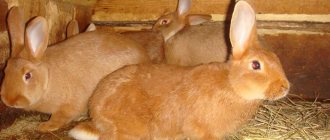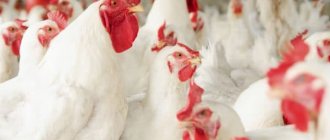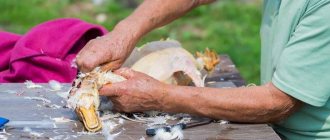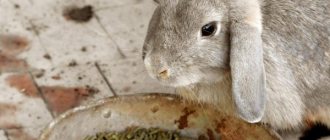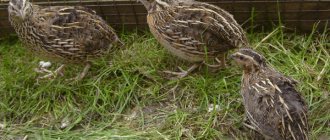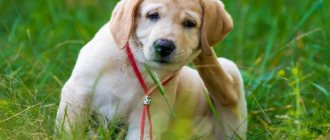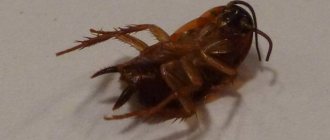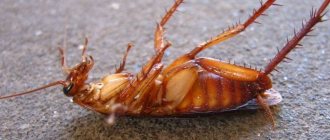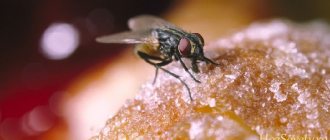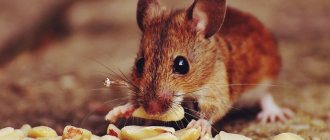How to fatten horses
For fattening horses, you can use the same feeds as for fattening cattle, but their diet must contain a sufficient amount of protein and carbohydrate feed.
During fattening, horses must be kept in a dry, bright, well-ventilated room and given daily 2-4 hours of exercise in the fresh air. The optimal fattening period for horses is 48-50 days. Horses of special meat breeds fatten better. They have a long body, a wide back with relatively short and moderately bony limbs. In horses, the highest quality meat is found in the dorsal part of the carcass. Kazakh Jabe horses, as well as Yakut ones, are especially close to the meat type. The live weight of a well-fed Kazakh horse of the Jabe type at the age of 3.5 years is 430 kilograms, the weight of the carcass after slaughter is 240 kilograms, internal fat is 5 kilograms, the slaughter yield is 57 percent, the yield of bones in the carcass is 14.5, fat is 13 .8 percent.
The meat of Kazakh and Yakut horses is distinguished by its high calorie content, marbling, and special taste. The weight of foals of the Yakut and Kazakh breeds at 5.5-6 months of age is 170-190 kilograms, or on average 44 percent of the weight of adult mares.
It is especially valuable that horses of these breeds, having high meat productivity, are well adapted to local natural conditions - Tebenevka. Good results can be obtained by raising and fattening foals obtained from crossing local Kazakh horses of the Jabe type with heavy breeds. Heavy-Kazakh crossbreeds have high growth energy and pay well for feed in terms of weight gain. During the fattening period (50-60 days), the average daily weight gain of such children is over 1 kilogram. Horses of the Adaev type and the Kushum breed group also have good fattening qualities.
The fat content of horse meat changes with age. The carcass of a six-month-old Jabe-type foal contains 2.64 percent fat, in 1.5-year-olds - 3.60, in 2-year-olds - 4.85, in 2.5-years - up to 6.1, in 3-year-olds - 10 .1 percent of the weight of the carcass Since national culinary products (kazy, karta, zhal, zhaya, shuzhuk) cannot be prepared from lean meat, the demand for fatty horse meat in the republic is increasing. Horsemeat of above-average fatness is 21-44.1 percent more expensive than average fatness. Horsemeat of above-average fatness includes a carcass in which the kazy has the appearance of a solid fat deposit, and at the cut near the white line - a thickness of at least 15 millimeters. In the carcass of Jabe type horses at the age of 30 months, the thickness of the kazy fat already exceeds the standard requirements; in the carcass of crossbred young animals of the indigenous type, the required amount of fat accumulates only by 36 months of age, and in the case of riding horses, it does not reach even 3.5 years of age.
Foals cannot be raised on full suckling, since mares are usually milked to produce kumiss. However, for the first two months after birth, the only food for the foal is mother's milk. After 2-3 months of age, the importance of plant foods in feeding foals increases. Foals from 3-4 weeks of age begin to be accustomed to eating plant foods. For this purpose, in a separate feeder they are given rolled oats mixed with wheat bran and mineral supplements. In the future, corn, legumes, cakes, etc. can be added to the mixture.
The best roughage for a horse is meadow hay, steppe hay and sown grass hay - cereal or cereal-legume hay. From concentrated feeds, horses can be fed oats, corn, barley, rye, bran, and cakes. Rolled oats are the best concentrated feed in a horse's diet. Legume hay in combination with concentrated protein feeds (cake, meal, grain legumes), corn or barley can completely replace oats in the horse’s diet. Rye can be given to adult horses in crushed form and mixed with chopped straw or good chaff. A good feed for horses is beet molasses.
You won’t be satisfied with just hay...
Domestic horses are lucky: the owner takes care of the animal all year round. But equids also have to work hard. Therefore, the diet of a working horse is more nutritious than that of a free-roaming horse.
Oats are considered the best dietary food for horses. This cereal contains amino acids, fats, phosphorus, and B vitamins, which ensure activity. If the animal is working, 12 kg of grain per day will restore the energy spent; for a non-working horse, 6 kg will be enough.
Oats can be fed dry, steamed, rolled, crushed, sprouted. When crushed, the film is destroyed or removed, making the product easier to absorb and digest. True, some useful substances are lost with dust and waste.
Rolled and crushed oats are used to feed foals, horses with dental problems, and when there is a lack of time during trips or on the road. The hygroscopicity of rolled grain allows you to prepare porridge and porridge, but such oats cannot be stored for a long time - they spoil.
Steamed oats are good for the gastrointestinal tract. When steaming, valuable substances are destroyed, but they can always be replenished by adding vitamin supplements.
Sprouted oats are more nutritious than dry oats. Starch is sugared in it, the content of amino acids increases, and the amount of vitamins B and E also increases. This food is useful for foals and breeding stallions during mating. From 50 to 100 grams of sprouted oats are introduced into the diet in combination with other products.
Compound feed - the leader among feeds
The feed consists of grain flour with minerals and vitamins. Nutrients are in the right and constant proportions. Compound feeds have been developed for certain groups of animals (sports, working, circus, young animals, pregnant mares, breeding stallions, old and sick horses). Compound feed is fed at least 3 times a day.
Do horses need nutritional supplements?
Without food additives, it is impossible to fully satisfy the balanced nutritional needs of animals. Horses are given:
FEEDING STANDARDS AND RATIONS FOR HORSES DURING GROWING AND FATTERING FOR MEAT
In most CIS countries, including Belarus, horse meat is not traditionally used as food. However, in many European countries, the reserves of meat breed horses have already been exhausted; the demand for horse meat on the world market is increasing, which creates a real precondition for increasing the export of fattened horses from the republic.
For the production of horse meat, super-repair young working horses and adult culled animals are used. The meat of foals up to one year is the most tender and aromatic.
To produce such dietary foal, it is necessary to increase the feeding of mares in the last quarter of pregnancy to stimulate fetal growth and future milk production. This allows foals to be sold for meat immediately after weaning. In other cases, it is advisable to put weanling foals on intensive fattening until the end of the year or until 2 years of age, when the carcass weight of young Belarusian horses reaches 200 kg. When organizing standardized feeding of young animals raised for meat, the average daily weight gain in the first 9 months is 900-1300 g (Table 133).
A large reserve of beef horse breeding is fattening adult horses 5-12 years old. Culled working horses for fattening produce high weight gains at low cost.
Feeding standards for young horses raised for meat, per head per day
Necessary vitamins and nutrition
Like any domestic animal, horses need to receive vitamin supplements, since they are responsible for their normal development and well-being. A lack of vitamins may cause symptoms such as:
- decreased vision and hearing;
- apathy;
- slow reaction to external stimuli;
- developmental and growth retardation;
- the coat becomes dull;
- weakness in the body.
Today there is a wide selection of vitamin mixtures, mixed feeds and herbal granules on sale that can provide the horse with all the necessary microelements for normal development. Among feed additives, bran stands out. They act as essential elements for normal digestion. Their amount should be approximately 1/3 of the total diet.
When considering vitamin supplements, you should pay attention to two types:
- special - they are prescribed only by a veterinarian when the animal is sick or a certain developmental pathology is detected;
- complex - you can purchase them yourself at any pet store; they will become an indispensable supplement for working horses.
Among complex supplements, the following stimulants are very popular:
- probiotics;
- amino acids – lysine, methionine and tryptophan;
- vitamin and mineral - for example, Feedbalancer.
Fattening a horse
Description
In order for horses to achieve maximum condition and in order to increase economic profitability, farmers do not limit themselves only to natural fattening of horses on pastures. According to experiments, horses that are specially fattened gain weight within 35-40 days, leveling out the cost of feed.
The average weight gain of individuals per day during fattening can reach one and a half kilograms. Horses of non-standard fatness reach standard parameters in 45-50 days, while horses of the second category are 10-15 days faster.
What are horses fed with?
To maximize the effect of fattening horses for meat, use: ● Grain waste; ● Silo; ● Root vegetables; ● Bard; ● Pulp. At the very beginning of fattening, horses are given a lot of silage and straw, and all kinds of food concentrates and hay in their diet do not exceed half the norm. The fact is that farmers save concentrates and hay for the end of the fattening period, when horses consume less silage and straw.
The daily diet of fattening horses should consist of at least 2.5 or 2.7 feed units. And the amount of protein digested by horses for each feed unit should be equal to 70-80 g in adults and 90-100 g in young animals.
Conditions of care
Horses are herbivores, and to provide them with a complete diet, you will need green mass (in summer), hay (in winter), and water.
Keeping a herd is the most profitable way. Pasture lands are sown with perennial grasses, which provide a fair treat for livestock. It is recommended to build several corrals or stables, depending on the number of livestock. Premises will be needed to corral animals at night and during severe frosts.
Herd maintenance also justifies itself by keeping financial costs to a minimum. The benefits received from the sale of meat products will significantly cover all expenses of the fattening period. The recommended time for slaughter is before the onset of winter, and there are quite objective reasons for this:
- the horse senses the onset of the cold season ahead of time and diligently gains weight before frost, and therefore the slaughter yield during this time period is quite high;
- It is best to store meat products at low temperatures;
- meat serves as an excellent supply for nomadic peoples for the winter months.
What to do if there is no pasture land
Herd keeping has its own alternative - the use of small pastures, paddocks or stables. It is preferable to purchase horses of meat breeds that have a large mass, from which you can get a good amount of meat. The fattening period includes driving animals out to pasture and feeding them.
The following are used as additional power sources:
- corn;
- cakes;
- bran;
- vegetable crops;
- corn silage.
A very good feeding is sugar-beet molasses, which during the fattening period can be given about 30 kg per day per head.
On the variety of diets for adult livestock
Minimum costs guaranteed
| Type of feed | How much to give in kg |
| Cereal porridge + cake and bran | 10–15 kg |
| Clover hay | 12–20 kg |
In the summer when kept in pasture or paddock
| Type of feed | How much to give in kg |
| Lush grass | 50 kg |
| Rolled grain | 12 kg |
| Beetroot-sugar molasses | From the autumn period up to 3 kg |
Diet for the winter months
| Type of feed | How much to give in kg |
| Concentrates with oats | 50 kg |
| Grain feed with chopped legume hay | Up to 10 kg |
| Vegetables | Up to 5 kg |
| Premix for cattle | Up to 0.3 kg |
For quick fattening
| Type of feed | How much to give in kg |
| Bread stillage | No more than 60 kg |
| Straw | Up to 20 kg |
| Bean-grain hay | No more than 50 kg |
How horses are kept
If stable breeding is chosen, then special attention should be paid to the accelerated fattening method using special technologies. They allow you to increase the horse’s weight to 450 kg, which will equal 58% slaughter yield in 12 months. Maintenance becomes more profitable due to the fact that growing time is reduced. The average weight of a 6 month old foal ranges from 200 to 250 kg. The taste qualities of meat products, as well as their value, depend entirely on fatness.
Some farmers use special Starter feed, whole milk substitutes and pre-start feed. Thanks to the content of microorganisms included in such a diet, the microflora in the intestine is restored, which leads to the acceleration of enzymatic processes and, as a result, faster growth of young animals.
The young remain with their mother until they are 60–90 days old, and in the second month they can safely begin complementary feeding. The average fattening period for a beef horse is two to three months. Stallions destined for slaughter are not worked so that they do not lose weight, and subsequently the quality of the meat products does not deteriorate. Nations that breed horses for their own food keep stallions separately.
Food containing prebiotics
Such feeds are used mainly for broiler breeding and they differ in the following:
- the presence of natural carbohydrates-prebiotics, which help maintain microflora in the intestines;
- content of humates - a natural stimulator of metabolic processes;
- the introduction of sorbents allows you to minimize the occurrence of such troubles as colic, mycotoxicosis, and other gastric diseases;
- ideal balance in vitamin and mineral composition;
- high-quality preparation of feed, due to which mycotoxicosis is completely eliminated.
We invite you to join our Zen channel and group on VKontakte or Odnoklassniki, where new articles are published, as well as news for gardeners and livestock breeders.
Similar articles:
- Tips for choosing saddle pads for horses
- Why are stallions castrated?
- Requirements for keeping horses in a private yard
Which breed is best to choose?
The ancient Slavs and Europeans always highly valued horse meat. And meat horse breeding itself was very popular. Dietary meat was served with pleasure on the tables of not only wealthy citizens, but also ordinary people. As soon as agriculture began to actively develop, horses were needed for military needs, and animals were no longer bred for food. There were even several royal decrees banning horse meat. In many European countries, horse meat was banned for consumption in the 19th century.
Where can the resulting product be sold?
Let's summarize the areas of product sales:
- steamed horse meat is sold to HORECA enterprises - bars, restaurants with national cuisines;
- horse meat with high dietary qualities is purchased by supermarket chains;
- horsemeat of average quality is delivered to the cannery and sausage production or processed into sausage products at its own base;
- kumiss, mare's milk and unprocessed meat are actively purchased by private individuals;
- kumis is sold to anti-tuberculosis dispensaries;
- meat, milk, kumis are supplied to medical and rehabilitation centers for therapeutic nutrition courses;
- the fat is sold at a high price to pharmaceutical companies.
Source: https://selo-exp.com/loshadi/kak-bystro-otkormit-loshad-na-myaso.html
Subtleties of fattening
For horses used for meat, the diet is based on the following factors:
- territorial location of the farm;
- budget;
- availability of forage areas.
In small farms, stud farms try to select feed according to their capabilities. Even if there is little food, but its volume is sufficient, adult animals and young animals will show good weight gain. Horses are not very picky animals in their diet, but due to their high susceptibility to gastric diseases, it is necessary to take a very responsible approach to the technology of storage, preparation and rejection of low-quality feed.
Most farms prefer to fatten adult livestock so as not to bother with foals, and the direction itself depends on the sales market and the desires of consumers.
Watering rules
There are also rules to follow when feeding an animal:
- one individual requires 30–60 liters of water every day;
- 1 kg of dry food requires about 2-3 liters of water;
- the higher the air temperature, the more liquid is required - in summer it is desirable that it be freely available all the time;
- the pet is given water as many times as it is fed per day;
- It is not advisable to give anything to drink during the first 2 hours after feeding grain, so as not to provoke colic and dilation of the stomach;
- do not give water to the horse immediately after physical activity when it is hot - this leads to inflammation of the hooves;
- liquid temperature minimum +8 °C;
- a working individual is given water if she continues to work for at least another hour after that.
